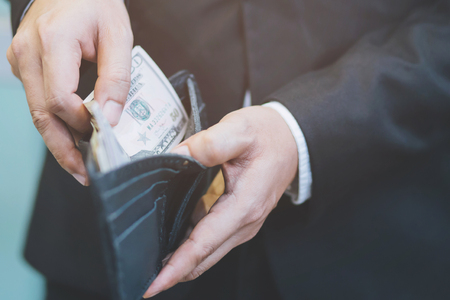1. Introduction
Financial preparedness is a crucial aspect of maintaining stability and peace of mind in life. Unexpected expenses can arise at any time, from medical emergencies to sudden job loss or even minor car repairs. Having the right financial safety nets in place can help you navigate these situations without falling into debt.
Two essential tools for financial security are an emergency fund and a rainy day fund. While these terms are sometimes used interchangeably, they serve different purposes. Understanding their differences can help you build a more effective financial plan that safeguards you against both major crises and everyday surprises.
Why Financial Preparedness Matters
Life is full of uncertainties, and being financially prepared ensures that unexpected costs don’t derail your long-term financial goals. Without adequate savings, even minor setbacks can lead to credit card debt or loans with high interest rates. That’s why having both an emergency fund and a rainy day fund is essential.
The Role of an Emergency Fund vs. a Rainy Day Fund
An emergency fund and a rainy day fund serve distinct purposes in personal finance. Here’s a quick comparison:
| Feature | Emergency Fund | Rainy Day Fund |
|---|---|---|
| Main Purpose | Covers major unexpected events like job loss or medical emergencies | Covers smaller, unexpected expenses like home repairs or car maintenance |
| Savings Goal | Typically 3-6 months worth of living expenses | A few hundred to a few thousand dollars, depending on lifestyle |
| Accessibility | Easily accessible but ideally kept in a separate high-yield savings account | Easily accessible in a checking or regular savings account |
| Usage Frequency | Rarely used; reserved for significant financial emergencies | Used more frequently for minor but necessary expenses |
By understanding the key differences between these two funds, you can better prepare for both major life disruptions and everyday surprises. In the following sections, we’ll dive deeper into how to build and maintain these funds effectively.
2. What Is an Emergency Fund?
An emergency fund is a dedicated savings account set aside to cover unexpected and significant financial setbacks. Unlike a rainy day fund, which is meant for smaller, short-term expenses, an emergency fund is designed to provide financial security during major life disruptions.
Purpose of an Emergency Fund
The primary purpose of an emergency fund is to serve as a financial safety net when faced with substantial and unforeseen financial challenges. This type of fund helps prevent reliance on high-interest debt, such as credit cards or personal loans, during times of crisis.
When Should You Use Your Emergency Fund?
An emergency fund should only be used for significant, unexpected expenses that impact your financial stability. Here are some common scenarios where an emergency fund can be essential:
(1) Job Loss
Losing a job can be financially devastating, especially if you don’t have another source of income lined up. An emergency fund can help cover essential living expenses like rent or mortgage payments, groceries, and utilities while you search for new employment.
(2) Major Medical Expenses
Unexpected medical bills can be costly, even with health insurance. Whether it’s an emergency surgery, hospitalization, or ongoing medical treatment not fully covered by insurance, an emergency fund ensures you get the care you need without going into debt.
(3) Major Car or Home Repairs
If your car breaks down or your home requires urgent repairs (such as a leaking roof or a broken HVAC system), these expenses can add up quickly. An emergency fund helps you address these issues promptly without financial strain.
(4) Family Emergencies
Sometimes, life throws unexpected challenges our way—such as needing to travel urgently for a family emergency or helping a loved one in distress. Having funds available ensures you can handle these situations without financial hardship.
Emergency Fund vs. Rainy Day Fund: Key Differences
| Factor | Emergency Fund | Rainy Day Fund |
|---|---|---|
| Purpose | Covers major financial emergencies | Covers minor unexpected expenses |
| Examples of Use | Job loss, major medical bills, large home/car repairs | Small car repairs, appliance replacement, minor medical costs |
| Savings Goal | Three to six months worth of living expenses | A few hundred to a couple thousand dollars |
| Accessibility | Easily accessible but not used frequently | Easily accessible for minor needs |
![]()
3. What Is a Rainy Day Fund?
A rainy day fund is a small savings cushion set aside for unexpected but minor expenses that pop up in daily life. Unlike an emergency fund, which is meant for major financial crises, a rainy day fund helps cover smaller, unplanned costs that can disrupt your budget but don’t require dipping into long-term savings.
Purpose of a Rainy Day Fund
The primary goal of a rainy day fund is to provide quick access to cash for minor financial surprises. These are typically expenses that aren’t large enough to justify using an emergency fund but are still inconvenient if not planned for.
Common Expenses Covered by a Rainy Day Fund
Here are some typical situations where a rainy day fund comes in handy:
- Car Repairs: Unexpected fixes like a flat tire, battery replacement, or brake repairs.
- Home Maintenance: Minor issues such as fixing a leaky faucet, replacing a broken window, or repairing a clogged drain.
- Medical Costs: Small out-of-pocket medical expenses like prescriptions or copays for doctor visits.
- Pet Emergencies: Vet bills for minor health concerns or routine pet care.
- Appliance Repairs: Fixing everyday household items like microwaves, refrigerators, or washing machines.
Rainy Day Fund vs. Emergency Fund
The key difference between these two funds lies in the size and purpose of the expenses they cover. Here’s a quick comparison:
| Rainy Day Fund | Emergency Fund | |
|---|---|---|
| Main Purpose | Covers small, unexpected expenses | Covers major financial emergencies |
| Savings Goal | A few hundred to a few thousand dollars | Three to six months worth of living expenses |
| Examples of Use | Car repairs, minor home fixes, medical copays | Job loss, major medical bills, natural disasters |
| Accessibility | Easily accessible checking or savings account | A separate high-yield savings or money market account |
How Much Should You Save?
The ideal amount for a rainy day fund depends on your lifestyle and typical unexpected expenses. A good rule of thumb is to have at least $500 to $2,000 set aside. This ensures you’re prepared for common financial surprises without straining your monthly budget.
4. Key Differences Between an Emergency Fund and a Rainy Day Fund
While both an emergency fund and a rainy day fund serve as financial safety nets, they differ in several key aspects. Understanding these differences can help you manage your finances more effectively and ensure youre prepared for both minor setbacks and major financial crises.
Fund Size
The size of each fund varies based on its purpose:
| Fund Type | Recommended Size |
|---|---|
| Emergency Fund | 3 to 6 months worth of living expenses |
| Rainy Day Fund | A few hundred to a couple of thousand dollars |
Accessibility
The ease of accessing these funds differs significantly:
- Emergency Fund: Typically stored in a high-yield savings account or a money market account, making it accessible but not too easy to spend impulsively.
- Rainy Day Fund: Often kept in a regular savings or checking account for quick access when small, unexpected expenses arise.
Purpose
The primary use cases for each fund are distinct:
- Emergency Fund: Covers major financial disruptions like job loss, medical emergencies, or significant home repairs.
- Rainy Day Fund: Handles smaller, unplanned expenses such as car repairs, appliance replacements, or minor medical bills.
Where to Store the Funds
Your choice of where to keep these funds impacts their accessibility and growth potential:
- Emergency Fund:
- High-yield savings accounts (ideal for earning interest while keeping funds accessible)
- Money market accounts (offers slightly higher returns with similar accessibility)
- Rainy Day Fund:
- Regular savings account (provides easy access while still keeping funds separate from daily spending)
- Checking account (best for immediate access when needed quickly)
By understanding these key differences, you can allocate your savings strategically and be better prepared for both minor inconveniences and major life disruptions.
5. How to Build and Manage Both Funds
Setting up and maintaining both an emergency fund and a rainy day fund requires planning, discipline, and consistency. Below are practical steps to help you create and manage these funds effectively.
Step (1): Determine Your Savings Goals
Before you start saving, its important to define how much you need for each fund:
| Fund Type | Recommended Savings |
|---|---|
| Emergency Fund | 3-6 months of living expenses |
| Rainy Day Fund | $500 – $2,000 for small unexpected expenses |
Step (2): Choose the Right Accounts
Select appropriate accounts that provide easy access while keeping your money secure:
- Emergency Fund: A high-yield savings account or money market account for better interest rates.
- Rainy Day Fund: A regular savings account or separate checking account for quick withdrawals.
Step (3): Set Up Automatic Transfers
Automating your savings ensures consistency. Set up recurring transfers from your checking account to your savings accounts each month. Start small if necessary and gradually increase contributions as your budget allows.
Step (4): Prioritize Savings Based on Needs
If youre starting from scratch, focus on building your rainy day fund first since it covers frequent smaller expenses. Once youve reached your goal, shift your focus toward growing your emergency fund.
Step (5): Reevaluate and Adjust Regularly
Your financial situation will change over time. Review both funds periodically and adjust contributions based on changes in income, expenses, or unexpected withdrawals.


